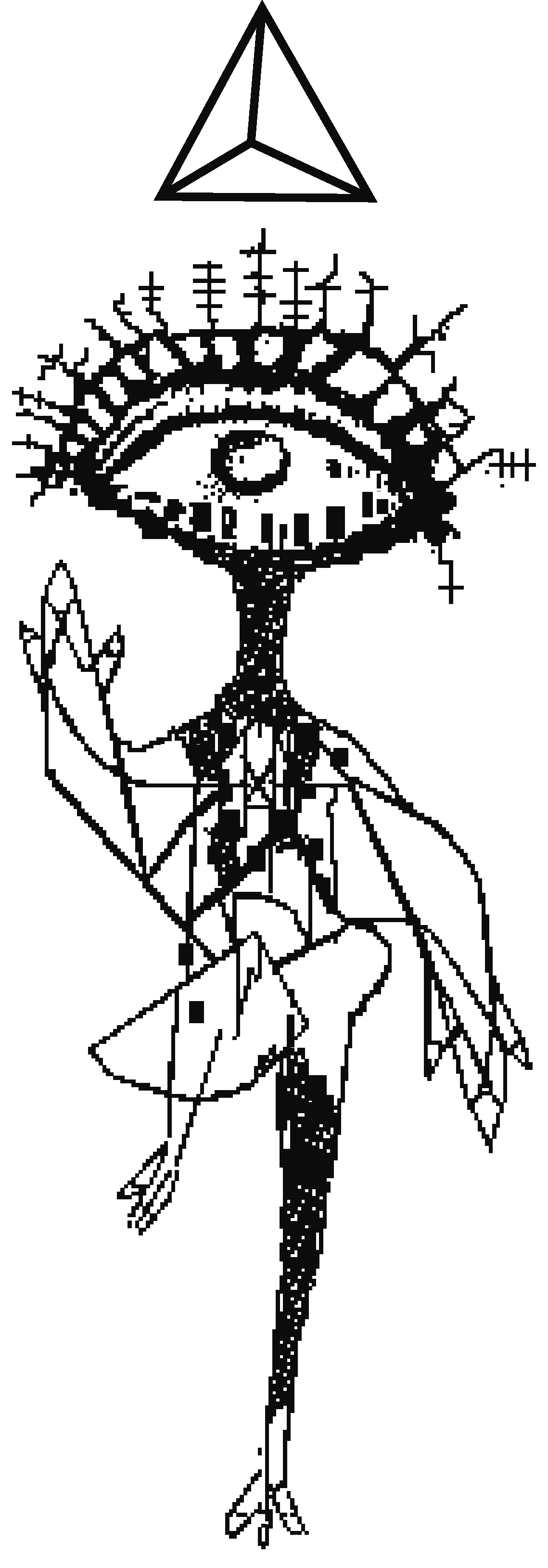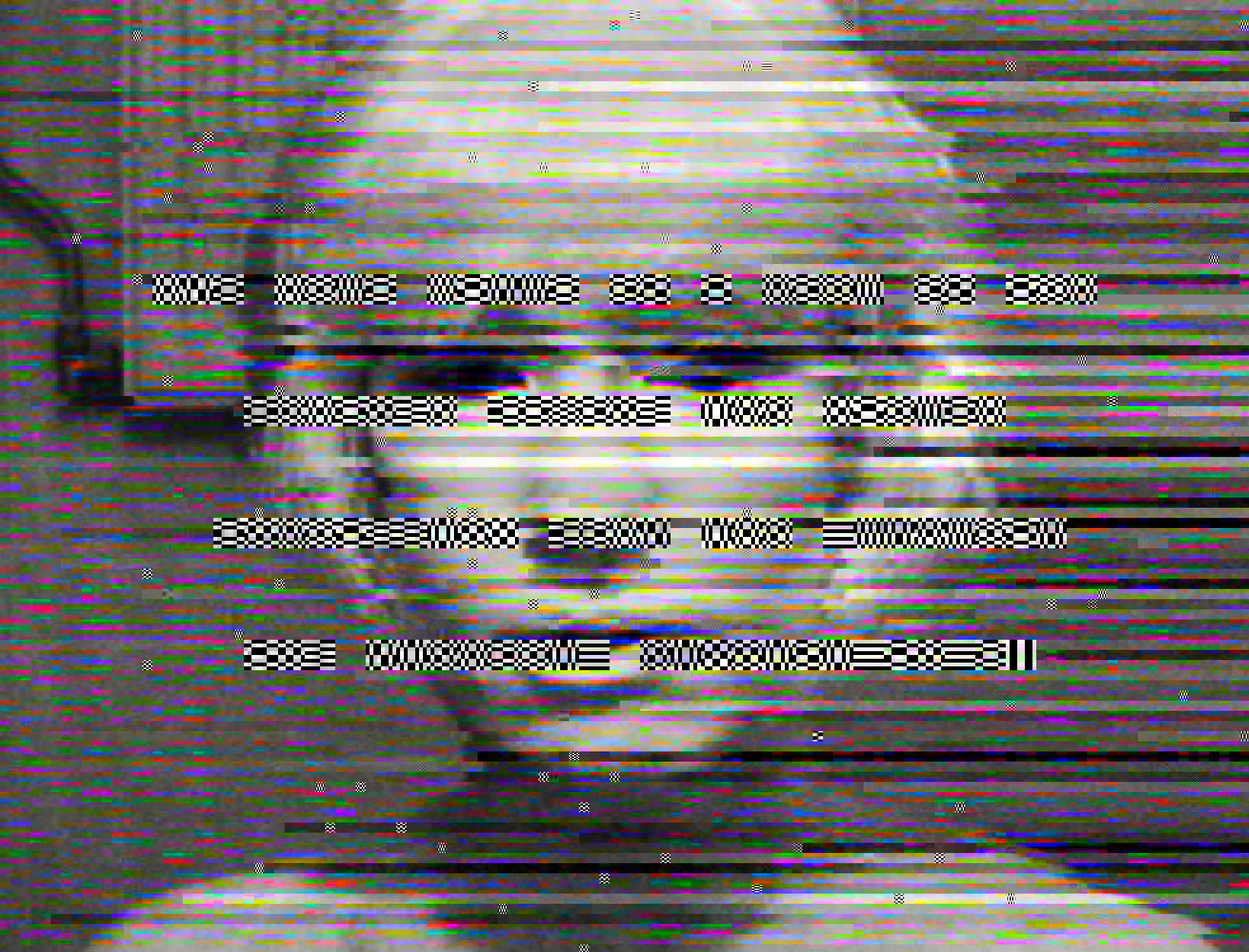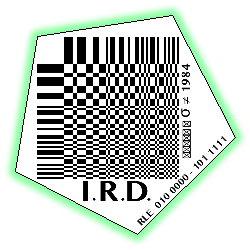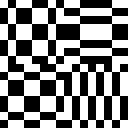A SIMPLE ESSAY.DOC VERSION
🔹💎🔹
︎︎︎︎︎︎︎︎︎︎︎ ︎ ︎︎︎︎︎︎︎︎︎︎︎ ︎ ︎︎︎︎︎︎︎︎︎︎︎ ︎ ︎︎︎︎︎︎︎︎︎︎︎ ︎ ︎︎︎︎︎︎︎︎︎︎︎ ︎ ︎︎︎︎︎︎︎︎︎︎︎ ︎
* ec
🔹💎🔹
︎︎︎︎︎︎︎︎︎︎︎ ︎ ︎︎︎︎︎︎︎︎︎︎︎ ︎ ︎︎︎︎︎︎︎︎︎︎︎ ︎ ︎︎︎︎︎︎︎︎︎︎︎ ︎ ︎︎︎︎︎︎︎︎︎︎︎ ︎ ︎︎︎︎︎︎︎︎︎︎︎ ︎
* ec

INTRODUCTION
The Angel of History,
inspired by Paul Klee’s 1920 monoprint, Angelus Novus,
and conceptualized by Walter Benjamin in 1940,
is a protagonist in my research on the role of resolution
within the realms of image processing.
Benjamin writes:
Her eyes are staring, her mouth is open, her wings are spread.
This is how one pictures the Angel of History.
Her face is turned towards the past, where she perceives a chain of events:
catastrophes piling wreckage upon wreckage.
The Angel would like to stay, awaken the dead, and make whole what has been smashed.
But as the pile of debris before her grows skyward, a storm is blowing from Paradise;
it has caught her wings with violence, propelling her into a future to which her back is turned.
This is the storm we call Progress.*
The Angel of History,
inspired by Paul Klee’s 1920 monoprint, Angelus Novus,
and conceptualized by Walter Benjamin in 1940,
is a protagonist in my research on the role of resolution
within the realms of image processing.
Benjamin writes:
Her eyes are staring, her mouth is open, her wings are spread.
This is how one pictures the Angel of History.
Her face is turned towards the past, where she perceives a chain of events:
catastrophes piling wreckage upon wreckage.
The Angel would like to stay, awaken the dead, and make whole what has been smashed.
But as the pile of debris before her grows skyward, a storm is blowing from Paradise;
it has caught her wings with violence, propelling her into a future to which her back is turned.
This is the storm we call Progress.*
A century after Klee first printed the Angel of History,
image processing technologies have evolved dramatically.
Now, the Angel finds herself traversing a landscape, leaving piles of obsolete technology behind -
signals daisy chained via burned out dongles, slipping in and out of compatibility.
In this environment, default settings corrupt improvements, while trade-offs compromise quality.
This worrisome situation prompts the Angel to compile her experience in Destitute Vision.
*transformed from: Walter Benjamin’s Theses on the Philosophy of History,
Illuminations, trans. Harry Zohn, New York: Schocken Books, 1969: 249.

︎︎︎︎︎︎︎︎︎︎︎ ︎ ︎︎︎︎︎︎︎︎︎︎︎ ︎ ︎︎︎︎︎︎︎︎︎︎︎ ︎ ︎︎︎︎︎︎︎︎︎︎︎ ︎ ︎︎︎︎︎︎︎︎︎︎︎ ︎ ︎︎︎︎︎︎︎︎︎︎︎ ︎
When digital mediations replaced the typically continuous analog signal with discrete data, artifacts like clipping, truncation, and quantization were introduced, raising questions about authenticity and integrity.
This shift led to a crisis of fidelity, challenging the reliability of the signal.
This shift led to a crisis of fidelity, challenging the reliability of the signal.

The Collapse of PAL (rendered version, 2010)
.
In the live television performance the Collapse of PAL, the Angel of History reflects on the move from analog Phase-Alternate Line signal (PAL; 625 total, 576 active lines) to Digital Video Broadcasting (DVB).
She expresses a desire to restore what has been broken, but decides to remain a passive witness,
rationalizing that the end of PAL was inevitable, because the signal was “just not good enough.”
New to digital image processing, the Angel expects a final, perfect standard.
But unbeknownst to her, the digital has actually trapped her in a Hologram PenRose-Stairs to Nowhere - or what engineers simply call “Progress.“ From then onwards, she is forced to keep migrating along an endless line of upgrades, following the subsequent phases of digital image processing, while invisible traces of PAL linger, haunting ‘better,’ digital signals.
She expresses a desire to restore what has been broken, but decides to remain a passive witness,
rationalizing that the end of PAL was inevitable, because the signal was “just not good enough.”
New to digital image processing, the Angel expects a final, perfect standard.
But unbeknownst to her, the digital has actually trapped her in a Hologram PenRose-Stairs to Nowhere - or what engineers simply call “Progress.“ From then onwards, she is forced to keep migrating along an endless line of upgrades, following the subsequent phases of digital image processing, while invisible traces of PAL linger, haunting ‘better,’ digital signals.
Radio Dada. Music by Extraboy.
Nov 23, 2008.
Nov 23, 2008.
To Smell and Taste Black Matter (1). Music by Extraboy. Feb 15, 2009
Washmountain. Music by Extraboy.
Sep 6, 2009.
Sep 6, 2009.
Rosa Moln. Music by Extraboy.
Dec 11, 2009.
Dec 11, 2009.
65 76 65 72 79 74 68 69 6e 67 20 69 73 20 (...) Apr 17, 2010
Decay of digital data, the obsolescence of hard- and software and other unexpected breaks from the expected flow of the render pipeline result in errors, bugs, glitches or complete loss of the image.
Some glitches may momentarily reveal the underlying, often invisible structures, exposing protocol, limitations and vulnerabilities.
////////////////////////////
Vernacular of File Formats (2010)
was acquired by the
Stedelijk Museum
in 2016
PDF available here
Some glitches may momentarily reveal the underlying, often invisible structures, exposing protocol, limitations and vulnerabilities.
////////////////////////////
Vernacular of File Formats (2010)
was acquired by the
Stedelijk Museum
in 2016
PDF available here
Still upset by the loss of the analog signal PAL, the Angel unleashes her frustrations with the digital realm.
In Acousmatic Videoscapes, she manipulates the layers of digital image processing, triggering artifacts like feedback, compression and glitches. But as time passes, the ruptures she has caused seem to reveal something more than just distortion. To her surprise, the breaks expose operations that normally remain invisible, hidden within black-boxed technology.
Intrigued, the Angel examines their qualities.
A key observation comes from Un/Resolved, an 84.48 meter-long data file organised as a bitmap, encoded pixel by pixel.
The file demonstrates that digital resolution is no longer just vertically encoded (like PAL). Instead, the long, unwrapped line of data reveals that digital image resolution also uses horizontal sampling (and possibly other, meta-axes). Moreover, its final rendering depends on how hardware reads, displays and possibly changes and otherwise distorts the data.
The Angel concludes that neither the image nor its resolution are determined by image data. Instead, they are procedurally shaped by interactions between the technological apparatus and the image processing pipeline, which encompasses stages such as production, dissemination, display and reception. As a result, a digital image is never truly fixed or static; but rather dependent on constant reinterpretation at every step of the image processing pipeline and beyond.
Armed with this new understanding of resolution as an ongoing process - the Angel starts to experiment, probing different elements of the processing pipeline.
In A Vernacular of File Formats, she playfully highlights the materiality that defines digital images, by transcoding a self-portrait into various common compression formats (GIF, BMP, JPEG, etc.). When she glitches these visually identical images, their organisation breaks, exposing the otherwise hidden language on the surface of the image.
As if on a Glitch Safari, she enjoys recognizing the traces of these specific bends and breaks, documenting their protocols while describing how their codecs influence visual representation.
representation.In Acousmatic Videoscapes, she manipulates the layers of digital image processing, triggering artifacts like feedback, compression and glitches. But as time passes, the ruptures she has caused seem to reveal something more than just distortion. To her surprise, the breaks expose operations that normally remain invisible, hidden within black-boxed technology.
Intrigued, the Angel examines their qualities.
A key observation comes from Un/Resolved, an 84.48 meter-long data file organised as a bitmap, encoded pixel by pixel.
The file demonstrates that digital resolution is no longer just vertically encoded (like PAL). Instead, the long, unwrapped line of data reveals that digital image resolution also uses horizontal sampling (and possibly other, meta-axes). Moreover, its final rendering depends on how hardware reads, displays and possibly changes and otherwise distorts the data.
The Angel concludes that neither the image nor its resolution are determined by image data. Instead, they are procedurally shaped by interactions between the technological apparatus and the image processing pipeline, which encompasses stages such as production, dissemination, display and reception. As a result, a digital image is never truly fixed or static; but rather dependent on constant reinterpretation at every step of the image processing pipeline and beyond.
Armed with this new understanding of resolution as an ongoing process - the Angel starts to experiment, probing different elements of the processing pipeline.
In A Vernacular of File Formats, she playfully highlights the materiality that defines digital images, by transcoding a self-portrait into various common compression formats (GIF, BMP, JPEG, etc.). When she glitches these visually identical images, their organisation breaks, exposing the otherwise hidden language on the surface of the image.
As if on a Glitch Safari, she enjoys recognizing the traces of these specific bends and breaks, documenting their protocols while describing how their codecs influence visual representation.
Unresolved (84.48-meters-long data file painted on canvas, partially wrapped, 2016)
UnResolved is inspired by
Beflix 29 PARALLEL STRIPES
UnResolved is inspired by
Beflix 29 PARALLEL STRIPES
///////////////////////////
DCT:SYPHONING. The 64th interval (2015)
was conceived during my
Oregon Story Board residency
2016 - 2017
and finished during my time at
Schloss Solitude
DCT:SYPHONING. The 64th interval (2015)
was conceived during my
Oregon Story Board residency
2016 - 2017
and finished during my time at
Schloss Solitude
On one such trip, she observes a senior Discrete Cosine Transform (DCT, a key algorithm in JPEG compression, that converts 8x8 blocks of pixel intensities into 64 frequency components), instructing a Junior DCT how to transcode data from one compression language to another,
or as they call it: how to ‘SYPHON.’
In a scene reminiscent of Edwin Abbott Abbott’s Flatland (1884), Junior and Senior DCT Syphon from one Ecology of Compression Complexity to a next. At first, they transcode simple artifacts such as pixels, scanlines and macroblocks. However, as they navigate into more complex realms, such as wavelets and vectors, they reach the limits of their own complexity and ultimately fall into kernel panic.
From a PenRose-Stairs to Nowhere, just one upgrade away, the Angel tries to help. She commits to the DCTs: Try to render like information! Unlike data, information spans multiple dimensions. It renders in various directions and not just North!
But the DCTs have reached stack overflow and have syphoned back to simpler complexities.
The Angel realizes then that upgrading image technology is a Paradox: efforts to optimize, clarify and advance will also inevitably introduce new limitations, filters and bias.
Refusing to let this new found insights - the Upgrade Paradox - go to waste, the Angel develops a fork (modification) of the DCT algorithm, by mapping each of its 64 distinct blocks to the most frequently used characters of the Roman alphabet. A method that allows her to steganographically encode messages as DCT error, transforming DCTs’ limitation into a new form of communication.
Possibly remediating a future DCT SYPHON.
To her, the DCT encryption method is more than just a poetic, steganographic tool; the fork provides radical access to the inner workings of a JPEG, enabling precise manipulations within the Huffman table. A process that illustrates how compression fundamentally alters the essence of image data, transforming image resolution into material evidence of transcoding.
or as they call it: how to ‘SYPHON.’
In a scene reminiscent of Edwin Abbott Abbott’s Flatland (1884), Junior and Senior DCT Syphon from one Ecology of Compression Complexity to a next. At first, they transcode simple artifacts such as pixels, scanlines and macroblocks. However, as they navigate into more complex realms, such as wavelets and vectors, they reach the limits of their own complexity and ultimately fall into kernel panic.
From a PenRose-Stairs to Nowhere, just one upgrade away, the Angel tries to help. She commits to the DCTs: Try to render like information! Unlike data, information spans multiple dimensions. It renders in various directions and not just North!
But the DCTs have reached stack overflow and have syphoned back to simpler complexities.
The Angel realizes then that upgrading image technology is a Paradox: efforts to optimize, clarify and advance will also inevitably introduce new limitations, filters and bias.
Refusing to let this new found insights - the Upgrade Paradox - go to waste, the Angel develops a fork (modification) of the DCT algorithm, by mapping each of its 64 distinct blocks to the most frequently used characters of the Roman alphabet. A method that allows her to steganographically encode messages as DCT error, transforming DCTs’ limitation into a new form of communication.
Possibly remediating a future DCT SYPHON.
To her, the DCT encryption method is more than just a poetic, steganographic tool; the fork provides radical access to the inner workings of a JPEG, enabling precise manipulations within the Huffman table. A process that illustrates how compression fundamentally alters the essence of image data, transforming image resolution into material evidence of transcoding.

///////////////////////////
DCT is a software that lets you write in error.
The first iteration was build by Ted Davis,
a second by Erik Axel Eggelink.
With the emergence of internet platforms and apps, the networked image arrives.
The networked image is subjected to not just Terms of Service (ToS), that can lead to censorship and filtering, it is also transcoded when uploaded (and sometimes even when reposted).
A protocol that alters the image in minor and often opaque ways (in terms of meta data alteration, cropping, re-compressing and user edits and additions). However, through iterative interactions of up and download, the image gradually degrades into a 'poor image’, riddled with trace evidence of its moves through the network.
At stake are the image’s authenticity, authorship, control and finally its legibility.
Memes, a type of networked image, start celebrating the poor image by purposefully ‘deep frying’ it.
The networked image is subjected to not just Terms of Service (ToS), that can lead to censorship and filtering, it is also transcoded when uploaded (and sometimes even when reposted).
A protocol that alters the image in minor and often opaque ways (in terms of meta data alteration, cropping, re-compressing and user edits and additions). However, through iterative interactions of up and download, the image gradually degrades into a 'poor image’, riddled with trace evidence of its moves through the network.
At stake are the image’s authenticity, authorship, control and finally its legibility.
Memes, a type of networked image, start celebrating the poor image by purposefully ‘deep frying’ it.

////////////////////////////
Behind White Shadows && Pique Nique Pour les Inconnues
is a research project undertaken during my 2019 JMAF residency in Tokyo, Japan.
Behind White Shadows && Pique Nique Pour les Inconnues
is a research project undertaken during my 2019 JMAF residency in Tokyo, Japan.
The encounter with the DCTs shifts the Angel’s focus from mapping the material of compression to researching genealogies of resolution.
She organizes a Pique-Nique Pour les Inconnues, a conference call for all forgotten and unknown faces (shadows) featured on color calibration test cards. When the participants assemble on her desktop, the Angel quickly realizes that the group consists of almost only Caucasian women; digital descendants of Kodak’s “Shirley Card,” the industry’s default reference for skin-tone balance since the 1950s.
Together, they discover how the use of predominantly Caucasian faces for color calibration has profoundly influenced the governing standards of visual representation, failing to accurately capture and depict a more diverse spectrum of skin tones.
The Angel and the faces of color calibration reflect on how these biased standards have narrowed the range of both image capture and render. They conclude that standardisation not only organises what can be seen; it also decides what will remain unrenderable, invisible, and therefore compromised.
The gathering evolves into a desktop tele-choral of solidarity, during which the group performs Paul McCartney's “We All Stand Together,” rallying against oppressive standards. They form the institutions of Resolution Disputes (i.R.D.) De/Calibration Army. As camouflage, the group applies 365 Perfect beautification filters; deleting blemishes, enlarging their eyes and whitening their skin through countless iterations - so many times that the filters eventually “deep-fry” their images (excessively filtered to the point of distortion). Quantized into a blocky, over-saturated hue; their faces exaggerating every bias built into both beauty apps and calibration algorithms.
.

Before mechanisms such as filtering, censorship and algorithmic bias dictate what images are rendered, disseminated, and ultimately seen (or left unseen), the image first needs to be captured.
What is captured depends on the scope of the technology, defined by factors such as frequency range, modality, or data type, which set a baseline for what is resolved.
Through tactical interventions, scope can be expanded to support alternative ecologies of visibility.
////////////////////////////
What is captured depends on the scope of the technology, defined by factors such as frequency range, modality, or data type, which set a baseline for what is resolved.
Through tactical interventions, scope can be expanded to support alternative ecologies of visibility.
////////////////////////////
Whiteout was created after joining the Armada de Chile on a research trip to Antarctica organised by Nicolas Spencer for Polar
it was also inspired by Axis research done with Mario de Vega and my time at ARTS COLLIDE Barcelona CERN
it was also inspired by Axis research done with Mario de Vega and my time at ARTS COLLIDE Barcelona CERN

Whiteout (2020)
SCOPE: EXPANDING SELECTIVE CAPTURE
After the shocking revelations of “white shadows” — the racist bias hard-wired into calibration systems that rely solely on Caucasian test cards — the Angel embarks on a quest for true colour reference.
She begins by building a Rainbow Generator, to Refract a Spectrum of Lost and Un/Named Colours. However, when finally deployed, the Generator fails to produce nature’s original glitch: the continuous gradient of the rainbow.
Instead, it renders a banded, unnatural almost cartoon-like collection of color bands.
After countless hours of discouraging research into the cause of this truncation, she finally identifies the problem: the light source in the Generator was following an optimization paradigm. As energy-efficient systems narrowed standard light emission to a specific collection of discrete wavelengths, they rendered full-spectrum lamps obsolete.
While to the eye, the light in the Rainbow Generator may appear to be full-spectrum white light, in reality, it is a simulation. The light only emits a narrow band of frequencies required to stimulate the three types of photoreceptor cones in the eye, responsible for detecting short, medium and long wavelengths, a selective emission technology that efficiently supports the perception of white and colored light while actually bypassing large bands of the actual spectrum.
Ironically, the Generator proves to be a tool that illuminates forgotten frequencies, revealing the interplay between perceptual limits and the invisible quantisation of technology.
The Angel, now painfully aware that even the latest technology (from hardware to software and filters) may be rooted in fundamentally imperfect protocols, seeks a way to regain insight and control over the frequencies around her.
In an act of desperation, she considers modifying her body to overcome her perceptual limitations.
She wonders whether all she needs is a different type of eye: a sensor that is larger, slower, or more sensitive to other frequencies of light. When she finally mounts an antenna in one of her eye sockets, she gains access to an expanded visual ecology.
But the modification quickly leads her into a Whiteout: lacking the tools to decode her new visual input, she is oversaturated with noise and devoid of resolution.
She begins by building a Rainbow Generator, to Refract a Spectrum of Lost and Un/Named Colours. However, when finally deployed, the Generator fails to produce nature’s original glitch: the continuous gradient of the rainbow.
Instead, it renders a banded, unnatural almost cartoon-like collection of color bands.
After countless hours of discouraging research into the cause of this truncation, she finally identifies the problem: the light source in the Generator was following an optimization paradigm. As energy-efficient systems narrowed standard light emission to a specific collection of discrete wavelengths, they rendered full-spectrum lamps obsolete.
While to the eye, the light in the Rainbow Generator may appear to be full-spectrum white light, in reality, it is a simulation. The light only emits a narrow band of frequencies required to stimulate the three types of photoreceptor cones in the eye, responsible for detecting short, medium and long wavelengths, a selective emission technology that efficiently supports the perception of white and colored light while actually bypassing large bands of the actual spectrum.
Ironically, the Generator proves to be a tool that illuminates forgotten frequencies, revealing the interplay between perceptual limits and the invisible quantisation of technology.
The Angel, now painfully aware that even the latest technology (from hardware to software and filters) may be rooted in fundamentally imperfect protocols, seeks a way to regain insight and control over the frequencies around her.
In an act of desperation, she considers modifying her body to overcome her perceptual limitations.
She wonders whether all she needs is a different type of eye: a sensor that is larger, slower, or more sensitive to other frequencies of light. When she finally mounts an antenna in one of her eye sockets, she gains access to an expanded visual ecology.
But the modification quickly leads her into a Whiteout: lacking the tools to decode her new visual input, she is oversaturated with noise and devoid of resolution.
Spectrum of Lost and Unnamed Colours (2024: Sound: Debit)
 Rainbow Generator (2024).
Rainbow Generator (2024). W/ Support of Herman Hermsen and So Kanno.
////////////////////////////
A Spectrum of Lost and Unnamed Colours
was commissioned and produced in the framework of EPFL - CDH Artist in Residence Program 2023, Enter the Hyper-Scientific
Partners: EPFL Center for Imaging, Edward Andò, CLIMACT Center for Climate Impact and Action UNIL & EPFL
Credits: Rosa Menkman
Support: Lotte Menkman
Curator & head of program: Giulia Bini









